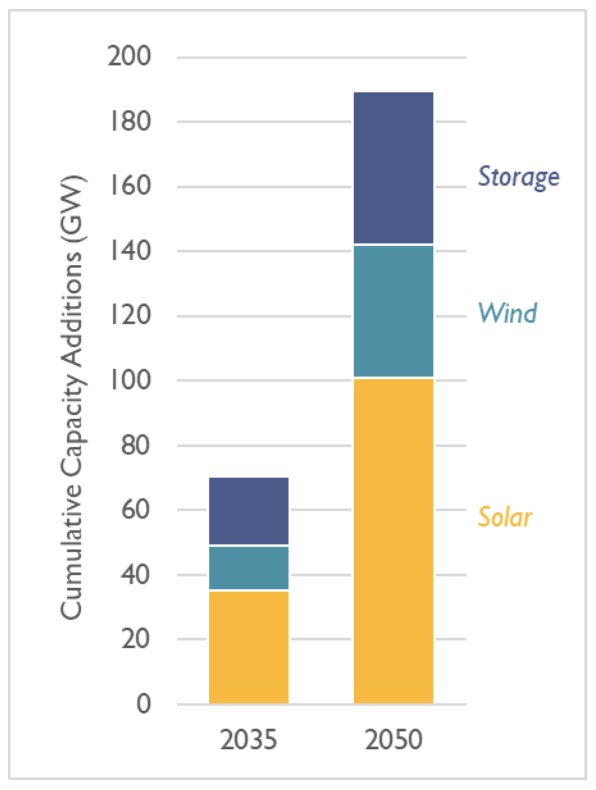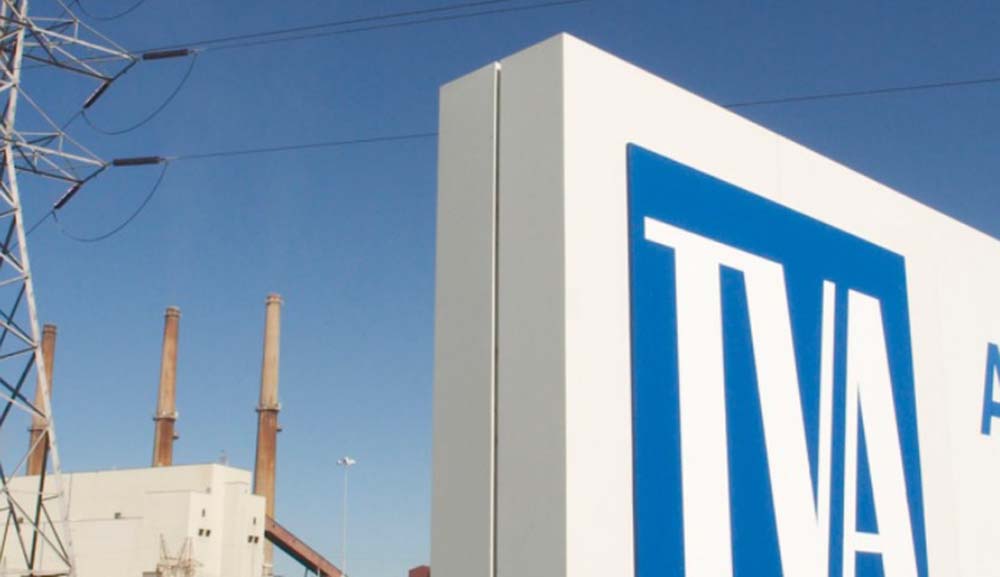Robust deployment of solar and storage, along with a transition to electric vehicles and added transmission to import wind power, would enable the federally owned utility Tennessee Valley Authority (TVA) to run on 100% clean energy from 2035 onward and save its customers about $200 billion through 2050.
Those results, in comparison to a projected “baseline” TVA resource plan that reaches 99% clean energy by 2050, are from a modeling study sponsored by the nonprofit Center for Biological Diversity and the consultancy GridLab, and conducted by Synapse Energy Economics. GridLab also served as technical advisor.
A policy brief by the Center for Biological Diversity released alongside the study called on TVA’s board of directors to “demand a concrete plan” for the utility to achieve 100% clean renewable energy by 2035. President Biden has appointed six of the nine members of TVA’s board, who constitute a majority of the board.
TVA is expected to prepare a draft resource plan this year. A spokesperson said the plan will be informed by TVA’s Valley Pathways Study, which according to a press statement will explore opportunities in “new nuclear,” renewable energy, electric vehicles, energy storage and hydrogen.
The clean energy plan for TVA would add about 50 GW of solar and storage by  2035, as shown in the nearby image, including 1.7 GW of distributed solar. The utility last year targeted adding up to 10 GW of solar by 2035.
2035, as shown in the nearby image, including 1.7 GW of distributed solar. The utility last year targeted adding up to 10 GW of solar by 2035.
Modeling for the clean energy plan assumed that by 2030 all light-duty vehicle sales would be EVs and all new space heating and water heating installations would use heat pumps. TVA would continue to rely heavily on nuclear and hydropower generation, while phasing out all coal units by 2033 and nearly all gas units by 2035.
Although the clean electric system would have somewhat higher costs than the projected “baseline” plan, as shown in the table below, net savings would result due to almost $240 billion in fossil fuel savings and other reduced costs for transportation and buildings.

Costs not counted in the table include $45 billion for added transmission to import wind power from 94% of the wind capacity projected by 2050, and $21 billion for energy efficiency and distributed generation costs. “These unaccounted-for costs would need to exceed $255 billion for the 100% clean energy scenario to be uneconomic,” the study said.
Benefits not shown in the table are public health benefits from early retirement of fossil generating units, estimated at $27 billion through 2050, and societal benefits of $265 billion due to greenhouse gas reductions.
Through 2050 about 100 GW of solar capacity could be sited by building an average of 480 MW of solar, or “two large solar farms,” in each county in TVA’s service area, and building 4.4 GW of distributed solar, the study found.
The clean energy plan includes 1.5 GW of long-duration storage by 2050, while an “ambitious DER” scenario also includes 32 GW of flexible load.
Synapse used the Encompass modeling software and four other modeling tools in its study. For renewables cost projections, Synapse used the “moderate” scenario of the National Renewable Energy Laboratory’s 2022 Annual Technology Baseline.
Policy aims
The policy brief, beyond calling for a concrete plan for TVA to achieve a clean, renewable grid by 2035, calls on U.S. national laboratories to analyze TVA’s energy pathways, as they have done for Los Angeles and Puerto Rico. The brief also asks Congress to “hold TVA accountable through oversight hearings,” and to pass legislation to “open the TVA system to greater competition” via increased transmission access and to require 100% clean, renewable energy by 2035.
TVA is the nation’s largest public utility, serving 10 million people across Tennessee, Alabama, Mississippi, Kentucky, and portions of Georgia, Virginia and North Carolina.
The report on the Synapse modeling study is titled “TVA’s Clean Energy Future.” The Center for Biological Diversity’s policy brief is titled “TVA’s Clean Energy Future: Policy Brief.”
This content is protected by copyright and may not be reused. If you want to cooperate with us and would like to reuse some of our content, please contact: editors@pv-magazine.com.








By submitting this form you agree to pv magazine using your data for the purposes of publishing your comment.
Your personal data will only be disclosed or otherwise transmitted to third parties for the purposes of spam filtering or if this is necessary for technical maintenance of the website. Any other transfer to third parties will not take place unless this is justified on the basis of applicable data protection regulations or if pv magazine is legally obliged to do so.
You may revoke this consent at any time with effect for the future, in which case your personal data will be deleted immediately. Otherwise, your data will be deleted if pv magazine has processed your request or the purpose of data storage is fulfilled.
Further information on data privacy can be found in our Data Protection Policy.